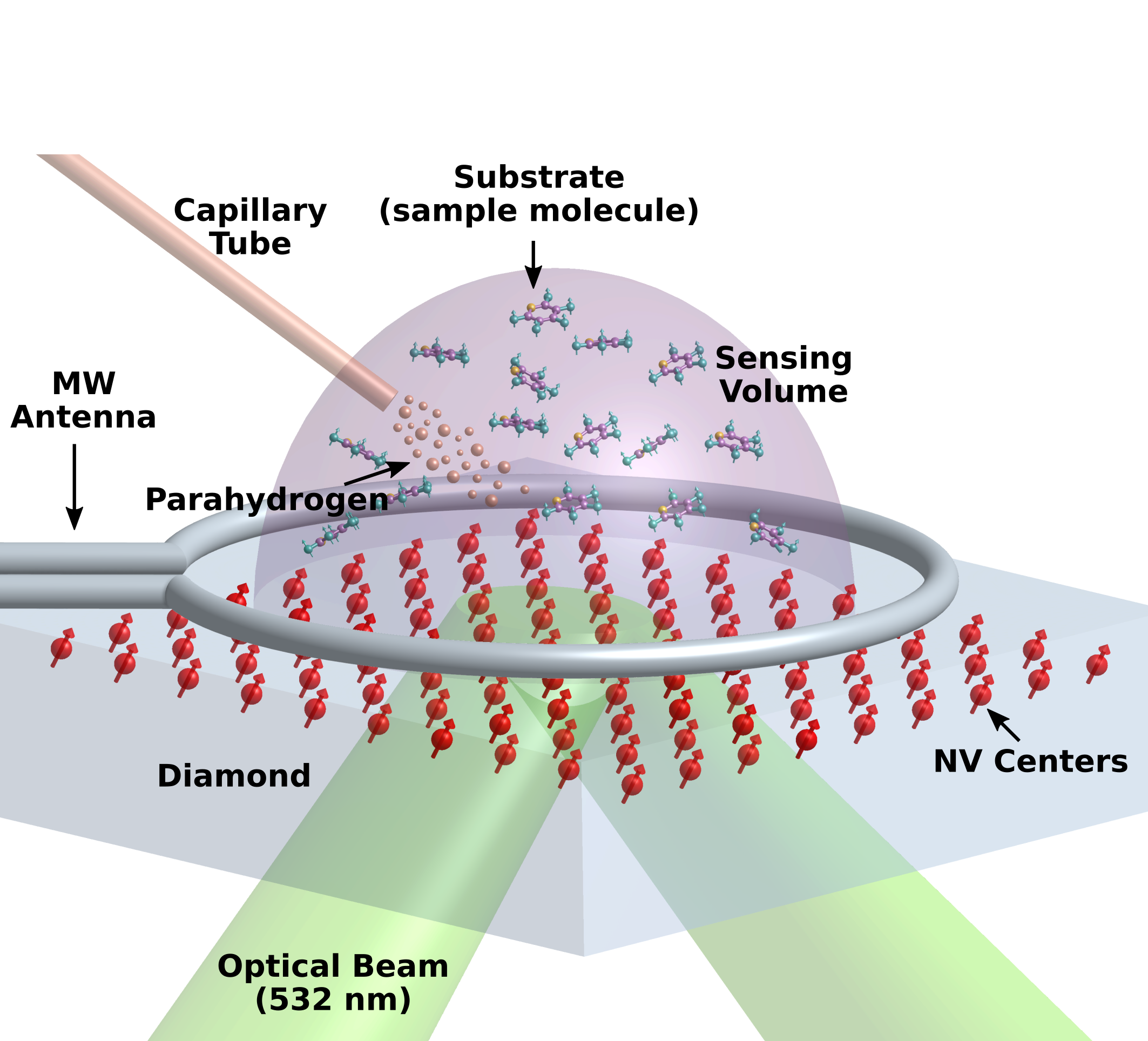Micron-scale NMR Spectroscopy using Diamonds
Nuclear magnetic resonance (NMR) spectroscopy is a widely used tool for chemical analysis and molecular structure determination. A conventional NMR spectrometer requires sample volumes of roughly a milliliter in order to obtain sufficient sensitivity. In a paper published recently in PRX Quantum, a collaborative team of researchers led by Quantum Technology Center (QTC) Postdoctoral Fellow Dr. Nithya Arunkumar, under the guidance of QTC Director and Electrical and Computer Engineering Professor Ronald L. Walsworth, demonstrate a quantum sensing technique using nitrogen-vacancy (NV) quantum defects that improves the sensitivity of a high-resolution NMR spectroscopy, so measurements can be made on sample volumes small enough to contain just a single biological cell. To achieve this advance, the researchers used an ensemble of nitrogen-vacancy (NV) quantum defects in a diamond chip and utilized a technique called SABRE (signal amplification by reversible exchange) that boosts the attainable NMR signal by hyperpolarizing the nuclear spins in the sample. SABRE-enhanced NV-NMR may become a high-impact tool for biological applications, such as tracking and monitoring of chemical reactions of metabolites in single cells. NV quantum defects in a diamond are an exciting new modality for sensitive magnetic field sensing with high spatial-resolution and operation under ambient conditions, including NMR spectroscopy at small length scales (nanometers to microns). Earlier work on NV-NMR spectroscopy suffered from low spectral resolution (kHz), due to the short decoherence time of the NV centers. This problem can be overcome by using a coherently averaged synchronized readout technique (CASR) which achieves a spectral resolution of a few Hz on a micron-scale volume. However, due to the finite sensitivity of the NV-NMR sensor, its application is restricted to highly concentrated pure samples, which limits its utility for most chemical and biological problems. Dr. Arunkumar and her colleagues instead exploit the advantages of both SABRE and CASR by integrating SABRE hyperpolarization with CASR NV-NMR to realize about 0.5% proton spin polarization in a micron-scale sample, providing a five order of magnitude enhancement in concentration sensitivity. “By combining the advantages of SABRE with nitrogen-vacancy centers, we have demonstrated the capability to perform high-resolution NMR at the level of a single cell,” says Dr. Arunkumar. “This is an important result and has broad applications in both biology and chemistry.” Co-authors of the study include Dominik B. Bucher, Matthew J. Turner, David Glenn, Mikhail D. Lukin, and Hongkun Park of Harvard University, Patrick TomHon, Sören Lehmkuhl, and Thomas Theis of North Carolina State University, and Matthew S. Rosen from Martinos Center for Biomedical Imaging, Massachusetts General Hospital. DOI: https://doi.org/10.1103/PRXQuantum.2.010305 The Quantum Technology Center (QTC) is a collaboration between the University of Maryland’s A. James Clark School of Engineering and College of Computer, Mathematical, and Natural Sciences, and the CCDC-Army Research Laboratory. QTC works on translating quantum science into new capabilities and technologies.
Related Articles: January 21, 2021 Prev Next |


